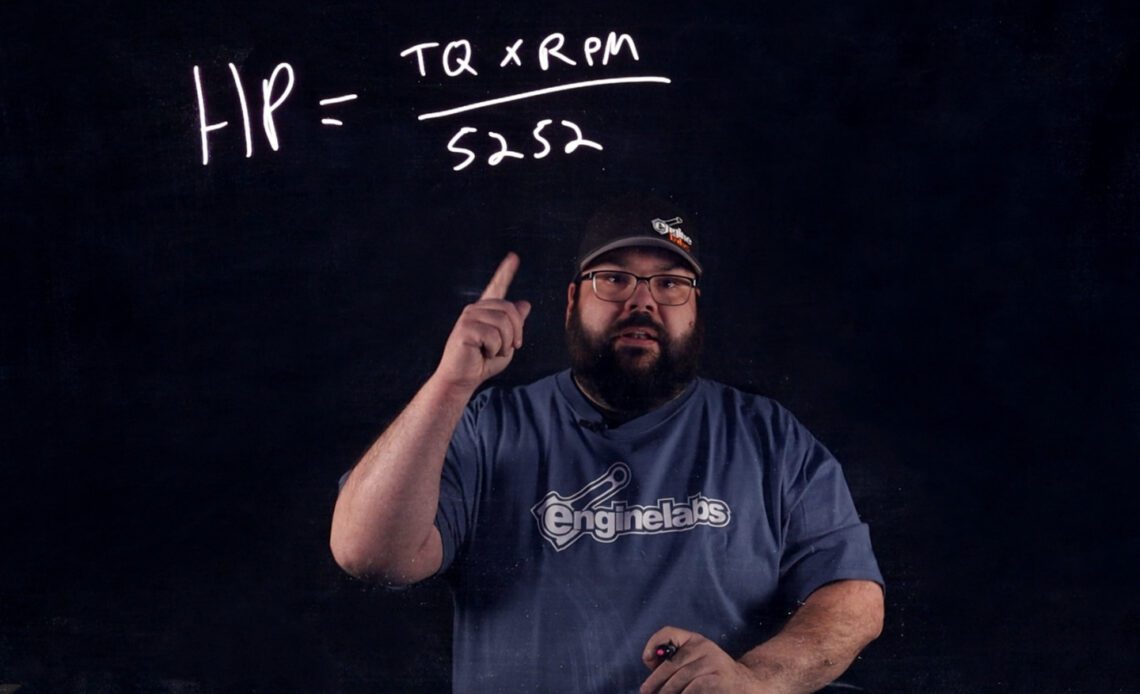If you’ve seen a dyno graph more than once in your life, you’ve likely noticed that horsepower and torque always seem to cross around 5,200 rpm, regardless of combination or engine type. That’s not some fluke, because horsepower and torque do, in fact, cross at exactly 5,252 rpm. It’s not magic or witchcraft, but rather simple math. We’ll explain.
Where The Lines Cross And Why
The mathematical equation for horsepower is torque times RPM, divided by 5,252. If you are familiar with algebraic expressions, you have probably already picked up why the lines of the dyno graph cross at 5,252 rpm. In the horsepower equation, when RPM equals 5,252, dividing it by the constant gives us a value of 1. So simplifying that equation for that specific RPM means that at 5,252 rpm, horsepower equals torque. (If you’re a pedantic math nerd, it actually means that horsepower equals torque, times 1, divided by one.)
So, we’ve answered why they always cross, but you might have picked up on something else… why is there an equation for horsepower? Aren’t we measuring it on the dyno? The answer to that question might surprise you. No, we aren’t directly measuring horsepower on the dyno. We are directly measuring torque, and then calculating horsepower using the torque measurement and engine RPM.
That leads us further down the mathematical rabbit hole. If all that is true, then below 5,252 rpm torque will always be greater than horsepower, and above 5,252 rpm, horsepower will always be greater than torque. But, again, why? That all comes down to the variable of time.
This is the reason for it all. Horsepower is a calculated number from torque and RPM. Because of this equation, horsepower will always equal torque at 5,252 rpm.
Torque Ove Time
You might have heard horsepower referred to as “torque over time.” While that isn’t quite correct mathematically, grammatically it is a fair description of horsepower. Let’s take a look at a make-believe dyno graph for a minute. For ease of discussion, let;s say the engine is perfectly efficient across a 5,000-rpm range, and it makes the same 500 lb-ft of torque at 2,500 rpm as it does at 5,000 and 7,500 rpm – a perfectly flat torque curve.
At 2,500 rpm, it is making that torque 42 times per second, which works out to 238 horsepower. At 5,000 It is making that same torque 83 times per second, which equates to 478 horsepower, or exactly double. It’s…
Click Here to Read the Full Original Article at DragzineDragzine…

